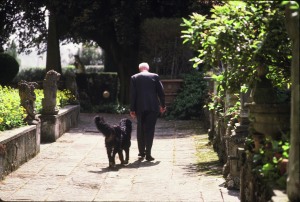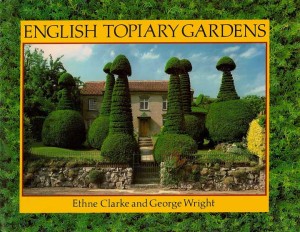We’re living in interesting times – honestly, I wish the days were rather more dull. In Colorado along the Front Range where I garden we’ve had a few drops of rain and some snowflakes floating around without purpose. Everything and everybody is stressed out; a couple of days ago, howling winds shook the remaining leaves from the peach tree. I check Pike’s Peak daily from our living room window for snowpack on the summit; a bit like reading tea leaves for the coming season’s water supplies. Some days are better than others. Inevitably.
That’s not to say efforts are not being made, albeit unevenly, with less than 100% buy-in from world leaders. However, artists of every stripe are making statements to drive home the message that with ingenuity, investment and involvement, the future will not be as bleak as it might be. At the 2021 United Nations Climate Change Conference (aka COP26) British architect ES Devlin created “Conference of the Trees” by turning the New York Times climate hub/conference room into a forest of 197 trees representing the 197 countries that have ratified the United Nations climate change treaty. As Devlin described it, the trees would serve “non-human witnesses” to the dialogues with environmental This year COP28 in Dubai seemed not to produce such winsome artistic statements, at least not that I could find. But despite an uneven series of meetings and statements from oil producing states that caused a sharp intake of breath, managed to close on a positive note, stating, that this marked ” ‘the beginning of the end’ of the fossil fuel era by laying the ground for a swift, just and equitable transition, underpinned by deep emissions cuts and scaled-up finance.” Fingers crossed, eh?thought-and-action leaders in the pavilion.
At the 2018 Venice Architecture Biennale, themed “Repair”, Australian artist Linda Tegg collaborated with Baracco + Wright Architects created Grasslands Repair to bring attention to the disappearing grasslands of southeastern Victoria with an indoor installation of 10,000 plants in 167 species of plants that form a unique habitat, one among many the world over, being threatened with extinction by over development; the plants used in the display were grown from seed collected in a natural area that has been replaced by a road, such is the price of progress.
When we go for our winter walks, I encourage my 4-year-old ygrandson to find wonder and magic in the woods and parks we visit; he tenderly picks up the tiniest rocks, a crispy fallen leaf, a wee stick, or a desiccated berry. He marvels in these remnants, finding hidden magic in their being just as I did as child, encouraged by my German grandmother reading her childhood story book to me…in German… about a little girl who finds magic in a blueberry wood (Hanschen im Blaubeerenwald, published in 1863). I made up my own story from the illustrations; about a forest elf who introduces her to the blueberry boys and redcurrant girls who helped her collect berries to take home to her mother. What magic we can find, what treasure we can store up, and what memories we grow when we respect the artistry nature has created.
©Ethne Clarke, 2023
For more about the installation “Grasslands Repair” go to the Baracco + Wright website. http://www.baraccowright.com/work#/repair/
For information about Es Devlin and her many installations, stage designs and philosophy visit her website at https://esdevlin.com/information, and more about Conference of the Trees here https://www.dezeen.com/2021/11/09/es-devlin-conference-of-the-trees-cop26/
.


 They weren’t hard to find since topiary breeds a showmanship of sorts, with the best examples of the pruner’s art ghettoed in the front garden, framing front doors and generally shouting, “OVER HERE.”
They weren’t hard to find since topiary breeds a showmanship of sorts, with the best examples of the pruner’s art ghettoed in the front garden, framing front doors and generally shouting, “OVER HERE.”